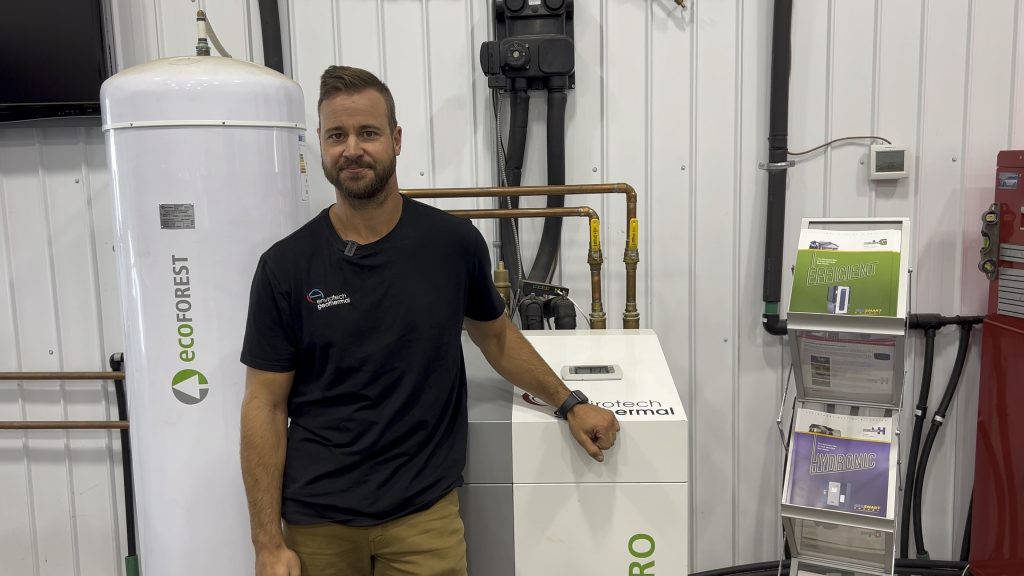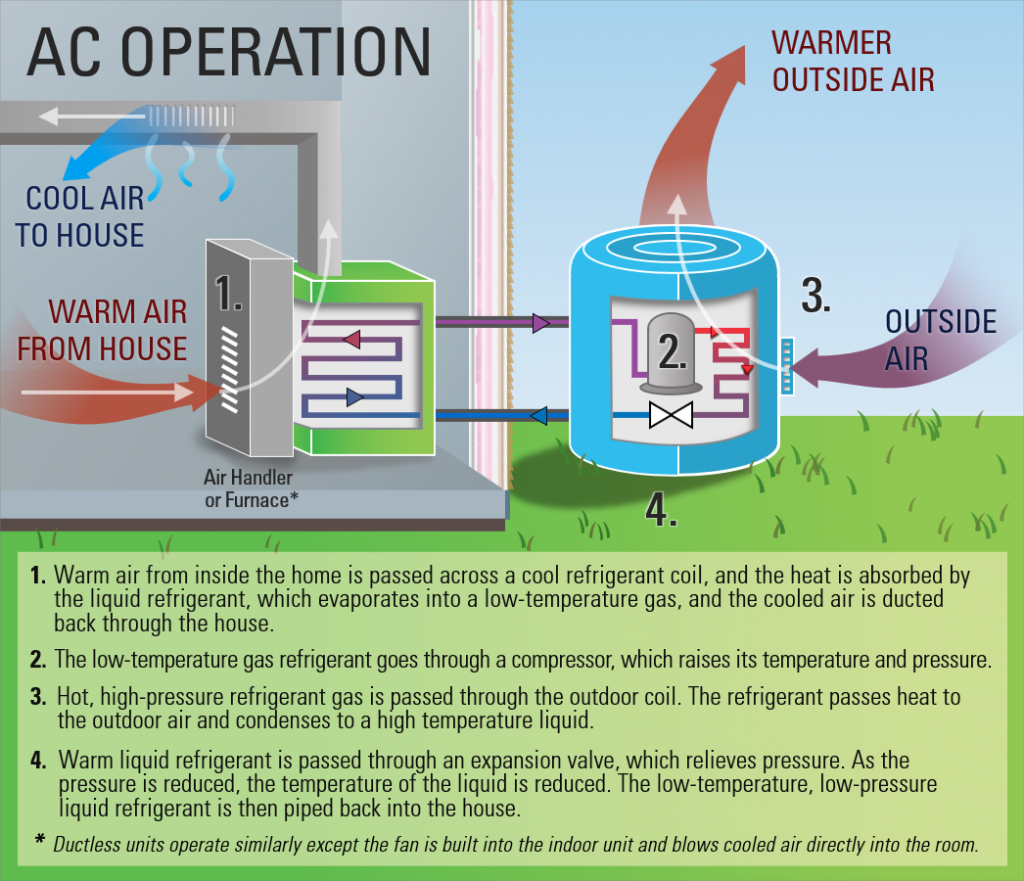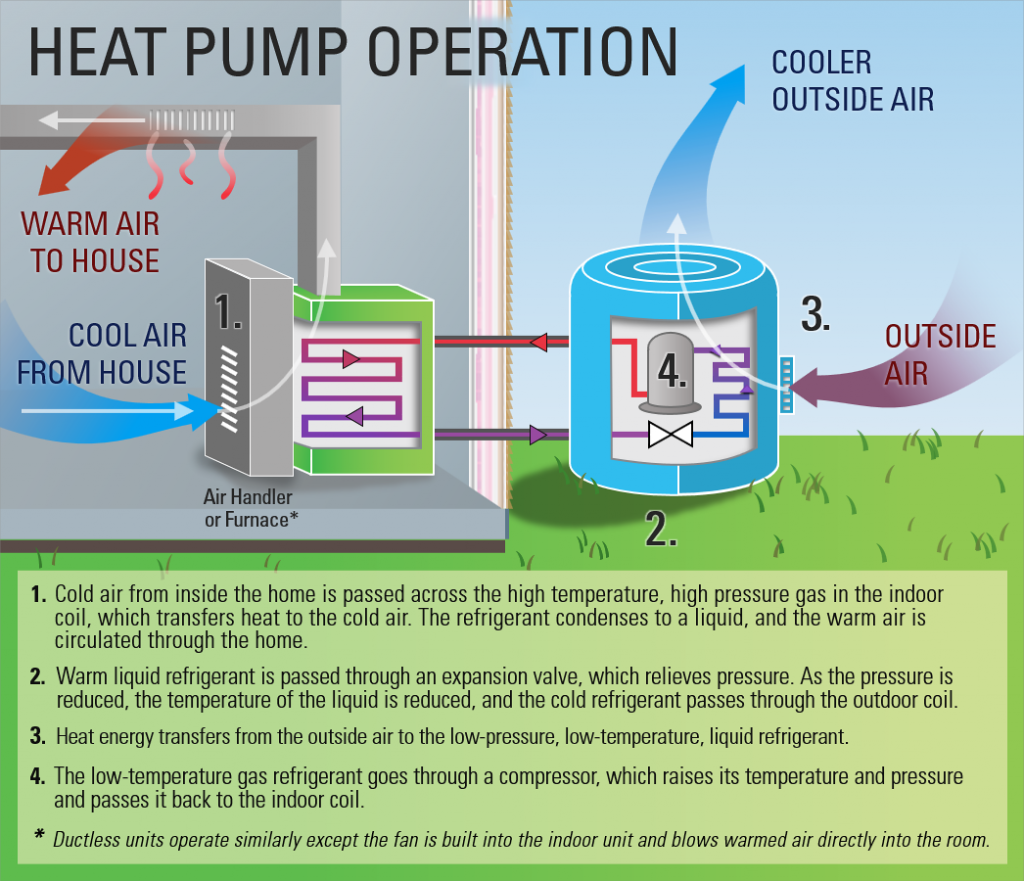In this week’s episode we meet up with Devon Winczura and Steve Oslanski from Envirotech Geothermal to learn why geothermal is catching on.
By David Dodge, GreenEnergyFutures.ca
“Just give me the warm power of the sun,” so open’s John Hall’s anthem to renewable energy written in 1979. The idea of getting energy from the sun or the earth was quite romantic in the the 1970s, but today it’s a pragmatic reality and one of the key solutions to the ravages of climate change.
Geothermal energy systems could be one of the most important members of the family of clean energy solutions.
It’s not a new technology, there are more than 100,000 geoexchange systems installed in Canada already, but what was a niche solution now seems poised to become one of the most important methods of heating buildings of the future.
Sounds melodramatic? Well, consider the benefits.

Geo is very energy efficient
Geothermal systems draw heat from the Earth and then heat pumps transfer and upgrade that energy at ridiculously efficient rates.
Heat pumps are up to 400% efficient at heating and up to 700% efficient at providing air conditioning. And that’s a big benefit – one system can provide your heating, hot water and air conditioning in those climate induced heat waves that are bringing record temperatures to cities across Canada and the US.
For comparison high end gas furnaces are about 98% efficient and simple resistance heaters, like the space heater in your home are 100% efficient.
How a geothermal system works is simple and complicated all at the same time.
Your geothermal (or geoexchange) system runs pipes (called heat exchangers) into the ground, about 4-5 for a standard home. They run 120 meters (400 feet) deep or horizontally into the ground and harvest the ground temperature which ranges from 0C to 7C (32-45F). This warmed liguid (water or glycol) is then fed into a heat pump, which is where the magic happens. The heat pump uses pressure and simple phyics to dramatically increase the temperature to warm your home and or your hot water.
How heat pumps work


The really cool thing is with the flip of a switch the heat pump reverses direction in the summer and extracts heat from your home and puts it back in the ground thus providing air conditioning.
Geothermal systems do not generate energy, they simply move energy through heat transfer and then use some electrical energy to run the compressors that upgrade the energy. The trick is heat pumps do this very efficiently.
For the home or building owner this means considerable savings on the energy you need to heat and cool your home.
A geothermal system and heat pump replace your furnace, your air conditioner and your hot water heater and you will no longer require a natural gas connection or the bill associated with it.
To completely eliminate your greenhouse gas emissions many people power their geothermal systems with solar, which also saves money on electricity.
State of of geothermal
We met up with Devon Winczura and Steve Oslanski of Envirotech Geothermal at their shop near Sherwood Park, Alberta to learn more about geothermal and the state of the industry.
Devon founded Envirotech Geothermal in 2006 with his sister. They had about 20 jobs on the go when we visited them. They do a fair amount of rural installations using horizontal ground loops which run about 120 metres horizontally instead of vertically which is cheaper.
But most of their work these days is doing homes in cities. Yup, they drill 4-5 vertical holes in a homeowner’s front yard and install a heat pump appliance and that’s all there is to it.
They did their homework and landed on Geohtermal
Darcy and Darren Crichton did just that for their 1960s bungalow home in north Edmonton. They had already added lots of insulation, they air sealed their home and they had already added solar to their home and garage.
The straw that broke the camel’s back was the heat dome event in the summer of 2021 when temperatures in Edmonton, Alberta reached 37 C.
The Crichton’s still had a very old gas furnace at the time and after they did considerable research they landed on a geothermal system because it can provide heating and cooling so efficiently. And since they had done so much other work on their home they are now net-zero.
Devon says business has waxed and waned with the price of natural gas since he set up shop 17 years ago. But today things seem to be taking off.
Envirotech has installed geothermal in large estate homes and small ones alike. We asked Devon what his favourite projects have been.
“The first one that comes to mind is definitely the Blatchford project in the City of Edmonton. To see an entire community go geothermal and seeing the builders have success…it’s awesome to be part of it.”
So when will we start to see more neighbourhood scale geothermal?
“It’s funny to say that we are now working on a subdivision just north of Sherwood Park, Alberta with Mattamy Homes and they are going be doing upwards of 1,500 homes and they’re going be putting geothermal into them,” says Winczura.
At Green Energy Futures we learned early on about the potential of geothermal. In one of our most inspiring stories a church partnered with a social housing agency to build 16 units of social housing and a church with a single geothermal system. This replaced 17 natural gas hook ups and all the bills. The project is solar powered and has only electricity bills. Reducing operating costs is one of the most sustainable things that can be done for institutions of any kind.
The Salvation Army is building a 175-unit complex that is geothermal heated and powered in part by solar. They will save $240,000 a year for the life of the system.
Why geothermal is going to get really big
Even the gas guys are saying natural gas will not be used to heat buildings in the long term for the simple reason that there is no practical way to capture the greenhouse gas emissions in your home.
This means there are only a few ways we can heat buildings in a carbon constrained future. Geothermal is time tested and offers significant benefits.
Some utilities believe hydrogen could be used to heat our homes. There is a pilot hydrogen blending project going on in Fort Saskatchewan, Alberta right now. But blending hydrogen with natural gas has a limit of about 30% and thus offers limited ability to reduce emissions. Getting to 100% hydrogen home heating would require infrastructure adjustments and homes to have new hydrogen appliances and ways of detecting hydrogen leaks would be critical.
Geothermal on the other hand is mature technology with known benefits, and it looks like it will be the key heating utility of the future.

